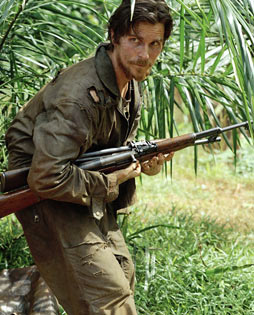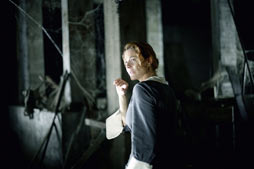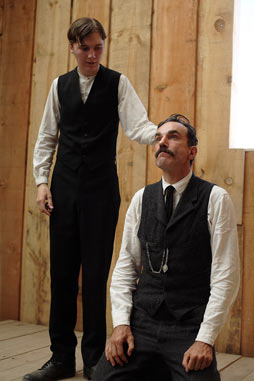By Chris Webb/nw news editor
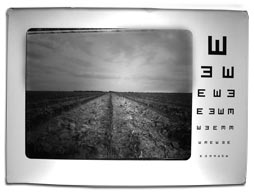
The stretch of land between the United States and Mexico has many names: the frontier, the border, no-man’s land.
But people rarely see past these titles, and the politics surrounding them to the unique culture of the region.
Frederick Spaulding, NW Campus assistant professor of art, hopes to open students’ eyes to diverse region’s beauty and complexity through his latest exhibit Eyes on the Border in WFAB Lakeview Gallery through Feb. 9.
Spaulding, curator for the event, has worked with five female artists over the past eight months to put the show together.
“I lived down on the border for three years in Edinburg. It’s such a different place than anywhere above or below it, but I’ve never really been able to encapsulate my feelings about that time in my life and what the border meant to me,” he said. “So I figured it would be interesting to see how others respond to the border in their work and art, and I thought photography would be a good medium.”
The exhibit is all visual, bypassing any language barriers, and consists of mostly photography and two videos that run on loop in the center of the exhibit.
“One thing that is interesting about the border that I think a lot of people miss is that it’s not all about political issues,” he said. “The news gives these sound bites about the border, and it’s always about immigration or the violence, but there is more to it.
“This isn’t about Mexico versus the U.S. This is about artists responding to the visual aspects and unique way of life, along with their own personal feelings about the border.”
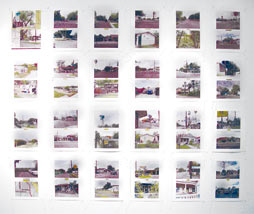
Each artist brings her own flavor to the exhibit and a different perspective on the border.
Alma Haertlein is responsible for two projects in the exhibit entitled Walk and Laredo Zen Gardens.
At first glance Walk is just 48 pictures of street corners, but a closer look reveals a journey from Haertlein’s house to the border.
Some streets show the flavor that can only be found there while others are barely discernible from the local streets of DFW.
Laredo Zen Gardens also leaves a lot of room for speculation.
A string of large rocks with a boy in the middle comes across as a strange site until one combines those images with Haertlein’s experiences with Laredo.
In her artist’s statement Haertlein explains that the boulders had always fascinated her, thinking them artwork.
After asking around, she learned that the rocks were put out to stop cars from driving through these people’s lawns. The boy running in a dry creek bed in the middle of the piece ties everything together.
She explains that she obtained the picture of the boy from her great grandmother, who lived in Laredo, and that the boy and creek represent the source of the rocks and the history of the region.
Susan Harbage Page of the University of North Carolina took another angle when viewing the border.
She spent time walking along the border and canoeing the Rio Grande where she photographed what others had left behind.
“I had often thought of the U.S.-Mexican border as the finish line, but this experience made me think of it as just one step in a long process and led me to go see the border and experience it myself,” she said in her artist’s statement.
Turning trash into art by photographing discarded clothes, she examines how colors blend with the raw landscape of land in her five-photo Longing—Personal Effects from the Border series.
Karen F. Sanders of the University of Texas Pan American examines the alienating affect the region can have on visitors.
She moved to South Texas a little over a year ago, and the unfamiliar landscape served as the influence for her contributions to the exhibit.
“This group of photos features the process of my explorations where the only thing that feels familiar to me is the ground under my feet,” she said in her artist’s statement.
Marcella Moran from Texas A&M International University approaches the border as a project of light contrasts, examining the way the night brings out vibrant colors against the neon sign in her contribution to the exhibit entitled Nite Lites.
“I conceived the idea for this project one day on my way to my mother’s house in downtown Nuevo Laredo. Stuck in traffic on Canales Street, I was witness to the transformation of day into night … the character of light was seen to suddenly transform the environment … what was once a monument to urban blight is soon a place of incredible beauty where the richness of color can totally overwhelm the senses,” she said in her artist’s statement.
San Antonio artist Anne Wallace adds her award-winning film to the exhibit.
The documentary shows the struggle of the people on the border, specifically along the wall separating California from Mexico.
One person interviewed in the video describes the wall as “the line of suffering.”
The video evokes strong emotions, documenting the views of the people.
After completing this project, Spaulding has found a new appreciation for the border.
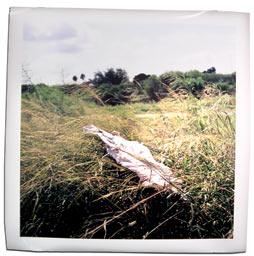
“Having a little bit of distance from the border has helped me step back and re-evaluate my feelings about the border,” he said. “It really is amazing to see the region from someone else’s eyes and not spending all our time thinking what do I think about this instead seeing what someone else thinks about or sees in it.”
This exhibit isn’t about numbers crossing a border; it’s not even about immigration, Spaulding said. It’s about a whole different place with a different cultural environment and a whole different way of thinking about life.
Most of all, Spaulding said this exhibit is about viewing the border with different eyes.
“We want to encourage people to take a little time to dig deep and find more sensitivity to their surroundings, but I don’t know if there is anyway to fully do that other than visiting the border yourself. These images don’t upset the ground we are standing on, but they give you a taste,” he said.
Lakeview Gallery is open 8 a.m.-10 p.m. Monday-Thursday, 8 a.m.-5 p.m. Friday and 9 a.m.-3 p.m. Saturday.
























